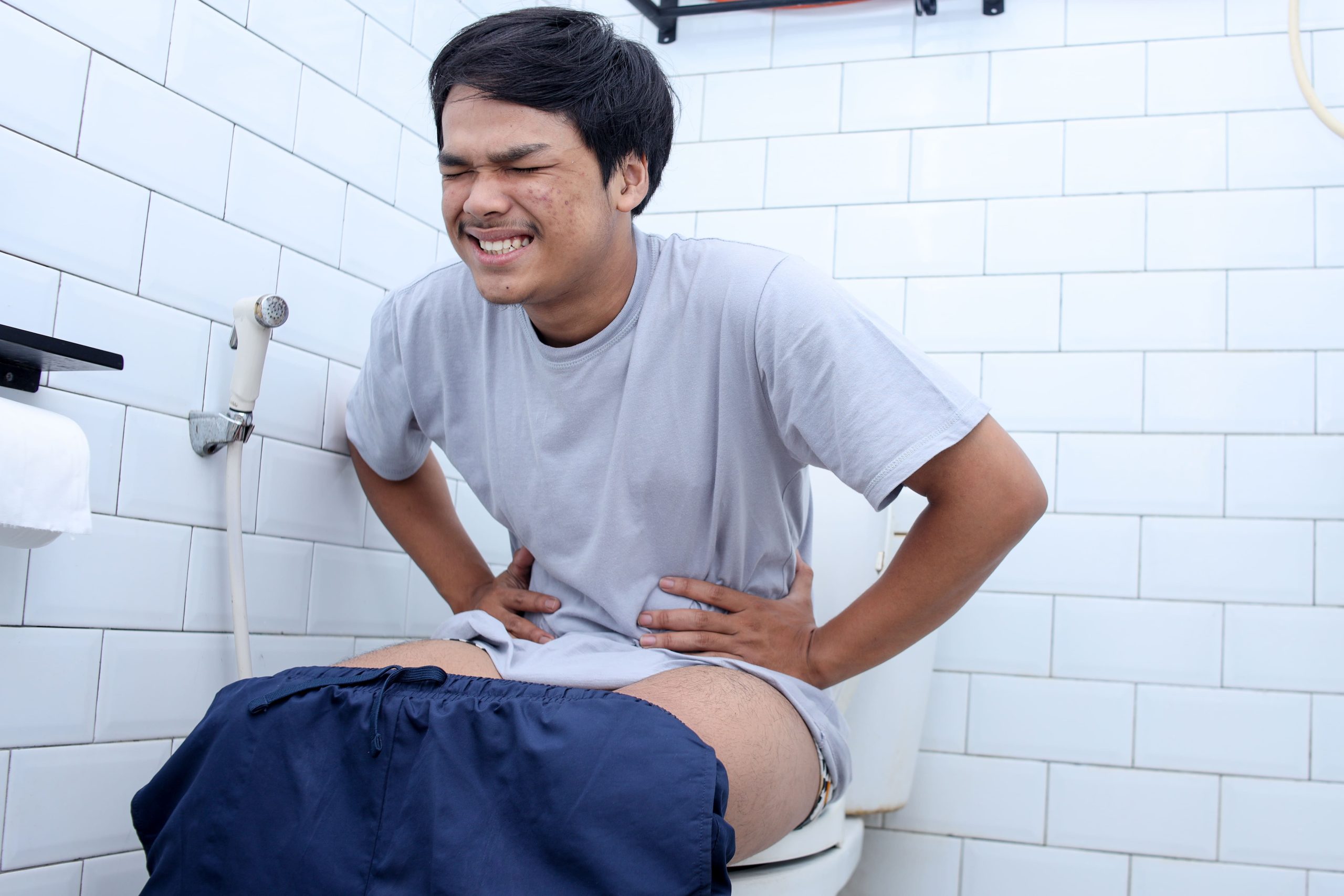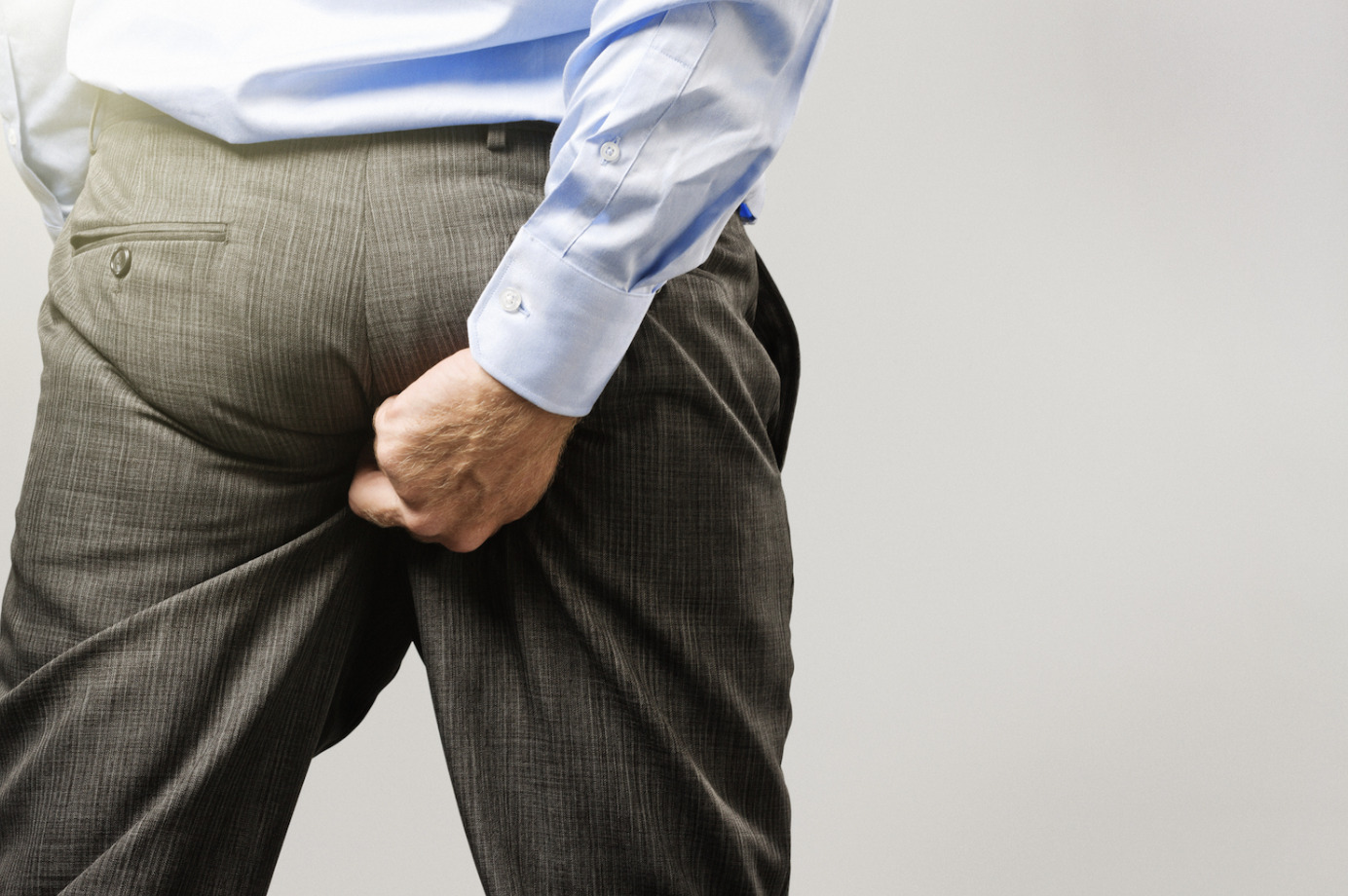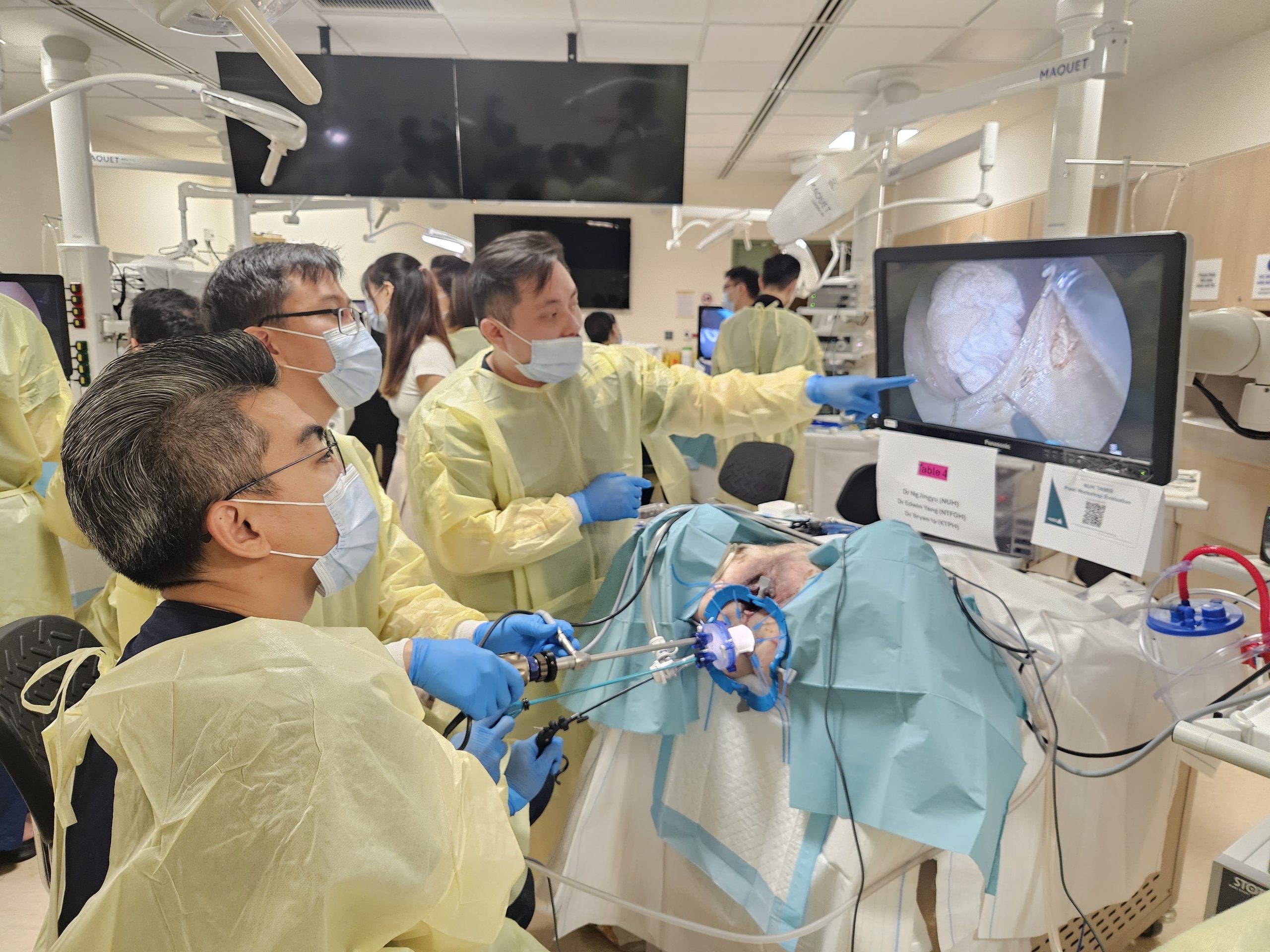Are you holding your breath and turning red just to have a bowel movement? Straining during bowel movements becomes problematic when you’re pushing for more than a few seconds or holding your breath to generate pressure. Normal defecation requires minimal effort—about the same pressure you’d use to blow your nose. The rectum’s natural peristaltic waves (rhythmic muscle contractions that move stool through the digestive tract), combined with relaxed pelvic floor muscles, should move stool without forceful pushing. When this process requires excessive effort, your body may signal potential dysfunction in either stool consistency, pelvic floor coordination, or rectal sensitivity.
Understanding Normal vs Excessive Straining
Regular bowel movements involve a coordinated sequence. The urge sensation triggers relaxation of the pelvic floor muscles (the muscles at the base of your pelvis). At the same time, the diaphragm (the primary breathing muscle below your lungs) creates gentle downward pressure. This process takes less than a few minutes without breath-holding or facial reddening. Your abdominal muscles engage lightly, similar to a gentle cough.
Excessive straining manifests through specific physical signs:
- Your face becomes red or purple from increased pressure in your chest
- Veins in your neck and forehead bulge visibly
- You hold your breath for extended periods, creating a Valsalva manoeuvre (forceful exhalation against a closed airway) that can spike blood pressure
- Your feet lift off the floor as you push, or you grip bathroom fixtures for leverage
- Sessions extend beyond the typical duration with multiple unsuccessful pushing attempts
The physiological cascade during excessive straining affects multiple systems. Pressure in your chest increases substantially. This temporarily reduces the amount of blood your heart can pump out. Blood pressure spikes can reach concerning levels, particularly for individuals with cardiovascular conditions (such as heart disease or high blood pressure). The sudden pressure changes can trigger vagal responses (activation of a nerve that affects heart rate and blood pressure). This occasionally causes dizziness or fainting (defecation syncope).
Physical Consequences of Chronic Straining
Haemorrhoid Development
Haemorrhoids form when chronic straining causes the haemorrhoidal cushions to enlarge and prolapse. These are normal vascular structures (blood vessel-containing tissue pads) in the anal canal that slip out of their normal position. The repeated pressure dilates these blood vessels beyond their elastic capacity. Internal haemorrhoids develop above the dentate line (a natural boundary inside the anal canal). They may prolapse through the anus during straining. External haemorrhoids form below this anatomical landmark. They present as painful lumps around the anal opening.
The progression follows a pattern:
- Initial straining causes temporary engorgement (swelling) that resolves between bowel movements.
- Continued pressure leads to permanent dilation (widening) and weakening of supporting connective tissue.
- Eventually, the cushions lose their anatomical position and prolapse with minimal effort or even spontaneously.
Anal Fissures
Anal fissures are linear tears (minor cuts) in the anal mucosa (the delicate inner lining of the anus). They develop when hard stool, combined with forceful expulsion, exceeds the tissue’s elasticity (the tissue’s ability to stretch). The posterior midline undergoes the most significant stretch during defecation. Most fissures occur at this location. The initial tear exposes nerve endings. This triggers anal sphincter spasm (muscle tightening) that perpetuates the injury by reducing blood flow to the healing tissue.
Chronic fissures develop characteristic features:
- Raised edges (sentinel pile)
- Exposed internal sphincter fibres (visible muscle tissue)
- Hypertrophied anal papillae (enlarged skin tags)
The pain-spasm cycle creates a self-perpetuating problem. Fear of pain leads to stool withholding, creating harder stools that can worsen the fissure.
Pelvic Floor Dysfunction
Paradoxical pelvic floor contraction during straining is termed dyssynergic defecation. This occurs when muscles that should relax during bowel movements instead tighten. The condition develops through learnt incorrect toilet behaviours. Instead of relaxing, the puborectalis muscle (a pelvic floor muscle that controls bowel movements) contracts during pushing attempts. This creates a functional outlet obstruction (a blockage caused by muscle behaviour rather than physical structure). This contradiction between pushing and pelvic floor resistance requires increasingly forceful straining.
The pelvic floor muscles undergo structural changes with chronic overload:
- Muscle fibres develop increased tension and trigger points (tight, sensitive areas within the muscle)
- Connective tissue loses elasticity
- The anorectal angle (the bend between the rectum and anus) becomes more acute, further obstructing stool passage
These changes create a progressive cycle in which greater force produces less effective evacuation.
Rectal Prolapse
Rectal prolapse represents the extreme consequence of chronic straining combined with pelvic floor weakness. The condition progresses through stages:
- Internal intussusception (where the rectal wall folds upon itself inside the body)
- Mucosal prolapse (where only the inner lining protrudes outside the anus)
- Full-thickness prolapse (involving all rectal layers pushing through the anal opening)
Contributing anatomical factors include:
- Deep pouch of Douglas (a space between the rectum and other pelvic organs)
- Redundant sigmoid colon (extra length in the lower part of the colon)
- Weak pelvic floor supports
Chronic straining accelerates the weakening of these structures. The rectum gradually loses its sacral attachments (connections to the tailbone) and telescopes through the anal canal.
Medical Conditions Associated with Straining
Chronic Constipation
Functional constipation involves multiple mechanisms in how the body processes waste. Slow transit constipation results from decreased movement through the colon (the large intestine). This allows excessive water absorption and hard stool formation. Normal transit constipation with outlet dysfunction shows regular colonic activity but an impaired ability to pass stool. Mixed patterns combine both mechanisms.
Slow transit patients show reduced high-amplitude propagated contractions. These are the powerful wave-like movements that propel stool toward the rectum. Outlet dysfunction patients demonstrate regular colonic activity but abnormal results on balloon expulsion tests and defecography. Balloon expulsion tests measure the ability to push out a small balloon from the rectum. Defecography is an imaging technique that shows how the rectum empties.
Irritable Bowel Syndrome
IBS with constipation involves heightened sensitivity in the digestive tract alongside altered movement patterns. Patients experience urge sensations at lower rectal volumes. They require higher pressures for evacuation. The rectum becomes hypersensitive to stretching. The anal canal shows reduced sensitivity to signals that trigger bowel movements.
Communication problems between the brain and gut contribute to symptoms. Stress hormones alter the intestinal lining’s barrier function. They also change the balance of gut bacteria (the microbiome, the community of microorganisms living in your digestive system). Serotonin signalling abnormalities affect both motility and sensation. Serotonin is a chemical messenger that helps regulate both gut movement and sensation. These mechanisms explain why psychological stress can worsen straining difficulties in IBS patients.
Neurological Causes
Spinal cord injuries disrupt the signals that control bowel movements at various levels. Injuries above the sacral segments preserve automatic reflex function but eliminate voluntary control. The sacral segments are the lower part of the spine near the tailbone. Sacral injuries completely destroy the reflex pathway. They require manual techniques to empty the bowel. Partial injuries create unpredictable patterns of dysfunction.
Multiple sclerosis affects bowel function by damaging the nerve pathways that control automatic digestive processes. Multiple sclerosis is a condition where the immune system attacks the protective covering of nerves. Patients lose awareness of rectal fullness. They simultaneously develop outlet dysfunction. Parkinson’s disease causes both slow transit from reduced dopamine and outlet obstruction from abnormal tension in the pelvic floor muscles. Parkinson’s disease is a progressive neurological condition affecting movement. Dopamine is a chemical messenger in the brain.
Proper Toilet Positioning and Techniques
The Squatting Advantage
The anorectal angle (the angle formed between the rectum and anal canal) measures a certain angle in the standing position. This creates a natural continence mechanism. Sitting increases this angle somewhat. Squatting or using a footstool to elevate knees above hips straightens the angle. This removes the anatomical obstruction to stool passage.
The squatting position engages different muscle groups. Hip flexion relaxes the puborectalis muscle (a muscle that loops around the rectum to maintain continence). Thigh pressure against the abdomen provides gentle compression without straining. The straightened anorectal angle allows stool to pass with minimal effort. Studies using defecography (a type of X-ray that shows how the rectum works during bowel movements) show faster, more complete evacuation in squatting positions.
Breathing Techniques
Coordinated breathing helps prevent excessive intrathoracic pressure (pressure inside the chest cavity) whilst maintaining effective propulsion. The technique involves:
- Inhaling deeply through the nose
- Exhaling slowly through pursed lips whilst gently bearing down
This creates steady abdominal pressure without the cardiovascular stress of breath-holding.
The “brace and bulge” technique coordinates muscle action:
- Brace the abdominal muscles as if preparing for impact
- Bulge the abdomen outward whilst maintaining steady breathing
This generates an effective propulsive force whilst keeping the pelvic floor relaxed. Practice this coordination lying down before applying it during toileting.
💡 Did You Know?
The defecation reflex involves both voluntary and involuntary components. You control the external anal sphincter (the outer ring of muscle you can squeeze voluntarily) consciously. The internal sphincter (the inner ring of muscle) relaxes automatically when stool enters the rectum. This is a response called the rectoanal inhibitory reflex (an automatic relaxation response that allows bowel movements to occur).
Dietary and Lifestyle Modifications
Soluble fibre from psyllium, methylcellulose, or foods like oats creates a gel-like stool consistency that passes easily without straining. Start with small amounts, one teaspoon daily. Increase gradually over the course of weeks to prevent bloating. Your healthcare provider can help determine the appropriate fibre intake based on your individual needs and existing digestive health.
Insoluble fibre from wheat bran, vegetables, and whole grains adds bulk to stools but requires adequate hydration to prevent hardening. Without sufficient water, insoluble fibre paradoxically worsens constipation and straining. An appropriate ratio combines both fibre types with consistent fluid intake throughout the day.
Physical activity stimulates colonic motility (the movement of muscles in the colon that helps move stool through the digestive system) through multiple mechanisms. Exercise increases colonic propagating contractions, particularly after meals. Core strengthening improves abdominal pressure generation without straining. Walking for a moderate duration after meals capitalises on the gastrocolic reflex, the natural increase in colonic activity following food intake.
Toilet timing matters for reducing strain. The gastrocolic reflex peaks shortly after meals, particularly breakfast. Attempting bowel movements during this window takes advantage of natural propulsive activity. Conversely, ignoring urges can lead to stool hardening and increased straining later.
Management Techniques
Stool Softeners vs Laxatives
Docusate sodium works as a surfactant (a substance that helps mix water and oil). It allows water to penetrate the stool, resulting in a softer consistency. However, clinical studies show minimal effectiveness for chronic constipation. These agents work better at preventing straining in specific situations, such as post-surgical recovery, rather than treating established constipation and straining patterns.
Osmotic laxatives (such as polyethene glycol) draw water into the intestinal lumen through osmotic gradients. The resulting softer, larger stool volume triggers natural propulsive reflexes. These agents maintain effectiveness with long-term use without causing dependency. A healthcare professional can adjust dosing based on individual response, typically starting with a standard daily dose.
Stimulant laxatives activate intestinal motility and secretion. However, they should serve as rescue therapy rather than daily treatment. Chronic use causes melanosis coli—dark pigmentation of the colonic lining. This change appears reversible and benign.
Biofeedback Training
Biofeedback therapy retrains dyssynergic defecation (when pelvic floor muscles don’t coordinate properly during bowel movements). It uses visual or auditory feedback about pelvic floor muscle activity. Surface electrodes or anal manometry monitors muscle tension whilst patients practise coordinated pushing. The input allows conscious correction of paradoxical contraction patterns.
Training progresses through stages:
- Awareness of pelvic floor muscles
- Isolation of relaxation
- Coordination with breathing
- Simulation of defecation
Sessions typically require several visits with home practice between appointments. Outcomes differ among patients based on individual health factors and commitment to the training process.
Suppositories and Enemas
Glycerin suppositories provide local rectal stimulation and lubrication within a short timeframe. The hyperosmotic effect draws water into the rectum. This softens stool and triggers evacuation reflexes. Bisacodyl suppositories add stimulant action but may cause cramping.
Phosphate enemas deliver results through osmotic action and rectal distension (stretching of the rectum). However, frequent use disrupts electrolyte balance and damages the rectal mucosa. Tap water or saline enemas provide gentler alternatives for occasional use. Mini-enemas with docusate offer targeted softening for rectal stool.
⚠️ Important Note
Never strain to the point of dizziness, chest pain, or vision changes. These symptoms may indicate dangerous cardiovascular stress. They require immediate cessation of straining and medical evaluation.
Pelvic Floor Exercises
Identifying Your Pelvic Floor
Locate your pelvic floor muscles by stopping urine midstream. Use this technique only for identification, not as a regular exercise. The muscles that accomplish this action are the same ones that require coordination during defecation. For an alternative identification method, imagine preventing gas passage. The external anal sphincter and puborectalis contract together during this action.
Pelvic floor exercises involve both contraction and relaxation phases. Contract for several seconds as if lifting the pelvic organs upward. Then consciously relax for a more extended period, allowing full muscle lengthening. The relaxation phase helps teach the release needed during defecation. Many individuals can contract but struggle with conscious relaxation.
Coordinated Pushing Technique
Practise coordinated pushing lying on your left side with knees bent. Place one hand on your abdomen and another near the anus. Inhale deeply, then exhale whilst gently bearing down. Feel the abdomen bulge outward whilst the anal area relaxes and descends slightly. This coordination should feel effortless, like yawning.
Progress to sitting practice on a chair before attempting on the toilet. The coordination involves maintaining this technique during actual bowel movements. Initial attempts may feel unnatural as you overcome established patterns of paradoxical contraction.
Daily Management Techniques
- Establish a Consistent Toilet Routine: Attempt to have a bowel movement at a regular time after breakfast each day, whether you feel an urge or not. Sit for a brief period without straining. This conditions the gastrocolic reflex (the natural response that triggers bowel activity after eating).
- Hydration Strategy: Drink a large glass of warm water upon waking to stimulate colonic activity (movement in your large intestine). Maintain steady fluid intake rather than large amounts at once. Warm beverages can trigger stronger gastrocolic reflexes than cold drinks.
- Pre-emptive Positioning: Keep a footstool by every toilet in your home. Position feet on the stool before beginning any pushing effort. Lean slightly forward with hands on thighs for the appropriate angle and pressure distribution.
- Lubrication Application: Apply petroleum jelly or coconut oil around the anal opening before anticipated bowel movements. This can reduce friction and the force required for stool passage. This may help with hard stools.
- Gentle Abdominal Massage: Perform clockwise circular massage starting from the right lower abdomen, moving upward, across, and down the left side. This follows the colon’s anatomical path (the large intestine where stool is formed). It can help stimulate propulsive activity (movement that helps push stool through the bowel).
When to Seek Professional Help
- Blood in your stool or on toilet paper that continues beyond occasional spots
- Tissue pushing out from your anus, a condition called prolapse, that doesn’t go back in on its own
- Pain during or after bowel movements that lasts for hours
- Being unable to have a bowel movement even though you feel a strong urge to go
- Alternating between constipation and uncontrolled diarrhoea
- Symptoms that continue even after you’ve made changes to your diet and lifestyle
- Stools that are consistently narrow and pencil-thin in shape
- Losing weight without trying, along with changes in your bowel habits
- New onset of straining during bowel movements if you have a family history of colorectal cancer
Commonly Asked Questions
How long should a normal bowel movement take?
A normal bowel movement completes within a short time of sitting with minimal effort. The urge sensation should trigger easy passage without breath-holding or facial straining. Some individuals require a few minutes for complete evacuation. Active pushing shouldn’t exceed a brief period at a time.
Can straining cause heart problems?
Excessive straining triggers the Valsalva manoeuvre (a technique where you hold your breath and bear down). This increases pressure in your chest. It temporarily reduces blood flow from your heart. This can cause irregular heartbeats (arrhythmias), particularly in individuals with existing heart conditions. Changes in blood pressure may trigger cardiovascular events in susceptible individuals. Defecation syncope – fainting on the toilet – results from these cardiovascular changes.
Is it normal to strain occasionally?
Occasional mild straining with dietary changes, travel, or medication effects remains within normal variation. However, frequent straining or significant effort required regularly may indicate an underlying dysfunction that warrants evaluation. The distinction involves effort level – gentle bearing down differs from forceful pushing with breath-holding.
What’s the difference between incomplete evacuation sensation and actual constipation?
Incomplete evacuation sensation may occur despite complete stool passage. This often stems from rectal hypersensitivity (when the rectum is overly sensitive) or pelvic floor tension (when the muscles that support your bowel are too tight). Actual incomplete evacuation leaves palpable stool in the rectum on digital examination (when a doctor can feel stool during a physical exam). Dyssynergic defecation (a condition in which the pelvic floor muscles don’t relax during a bowel movement) frequently causes both the sensation of retention and actual retention. Differentiating requires anorectal manometry (a test that measures pressure and coordination in the rectum and anus) and balloon expulsion testing (a test that checks how well you can push out a small balloon).
Should I take daily laxatives to avoid straining?
Daily osmotic laxatives (such as polyethene glycol, which works by drawing water into the bowel to soften stool) are safe for long-term use when lifestyle modifications prove insufficient. Stimulant laxatives (which work by triggering bowel contractions) should remain rescue therapy only. The goal is to achieve soft, formed stools that pass without straining rather than inducing diarrhoea. Appropriate fibre and fluid intake can often eliminate the need for laxatives. A healthcare professional can provide guidance on proper laxative use.
Next Steps
Effective management requires position modification, breathing techniques, and gradual dietary changes. Begin with proper toilet positioning using a footstool and controlled breathing patterns. Optimise stool consistency through appropriate fibre intake and hydration.
If you are experiencing persistent straining with blood in your stool, prolapse, or inadequate relief despite position and dietary modifications, consult a colorectal surgeon for comprehensive evaluation and treatment.














